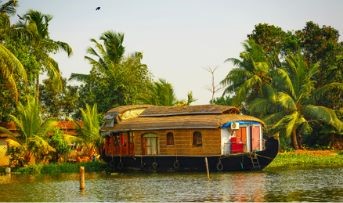General Insurance Blogs, Articles & Updates by - Magma HDI
Have us call you
- RENEW YOUR POLICY
- BUY NEW POLICY

Sleep syncing is the permanent solution for poor sleep habits
Quality sleep immensely affects your daily life and good health. Your sleep cycle determines everything from your mind to your physical well-being. If you lack adequate sleep, you can experience stress, fatigue, irritability, anxiety, headaches, and even depression. Things can sometimes get out of hand for you.
Lack of sleep can affect your personal as well as professional life. In a fast-paced world, getting sound sleep has become challenging. Adhering to a sleep schedule that works for you is even more difficult. There are many ways to get your sleep cycle back. From playing serene music to meditation and reading, anything can work out for you.
One such method is: sleep syncing. It is a comparatively new concept that has come in. It has been derived from sleep experts who have studied sleep patterns for decades now. With sleep syncing, you regain your regular sleep cycle. Let's learn more about sleep syncing here:
What is sleep syncing?
Sleep syncing refers to keeping your circadian cycle in check. The circadian cycle is the sleep-wake cycle of your body that takes place across the span of 24 hours. It is affected by various factors, including hormones like melatonin and even sunlight.
With sleep syncing, you give your sleep-wake cycle a gentle nudge. This way, your body will sleep when it's meant to. It will ensure better sleep, more energy, a good mood, and a healthy body.
How to practice sleep syncing?
There are many ways and means by which you can practice sleep syncing. They are as follows:
1. Fix a schedule
Having a timetable is necessary. You must set a designated time for sleeping and waking up daily. You can then align all your activities around the same. You can use a sleep tracker to find out your sleep length initially. Once you are sure, work out a schedule and set your alarm accordingly. You can also set a bedtime routine. It can include skincare, reading, meditation, light yoga, or even journaling.
2. Get sunlight
Sunlight plays a pivotal role in establishing your circadian cycle. When you wake up, ensure you get enough sunlight for your body. You can gently walk or stand in the sunlight after waking up. Pulling off your curtains and waking up to sunlight can be effective too. It helps fix your sleep cycle and even boost productivity.
3. Consume less caffeine
Do not incorporate a lot of caffeine in your daily routine. Caffeine can throw you off your circadian cycle and cause immense harm. Although caffeine effectively boosts energy, it can keep you up at night. If you consume tea or coffee late in the evening, it will keep you awake till late. You need to switch to decaf if you are addicted to caffeine.
4. Avoid gadgets
If you use your phone or laptop excessively before bed, you can find it difficult to fall asleep. It can disturb the production of sleep hormones in your body. It is advised not to use phones an hour before your sleep time.
Sleep syncing is one of the most effective tools to fix your sleep cycle. It has been proven effective for many people across the globe. You can try the aforementioned pointers for yourself to get the desired results. Also, remember you should always have online health insurance to keep you covered.
Click HERE to buy online health insurance.
Disclaimer: The information provided above is for illustrative purposes only. To get more details, please refer to policy wordings and prospectus before purchasing a policy.

The future of the Indian healthcare industry: Challenges and opportunities
The Indian healthcare industry is one of the biggest sectors of the Indian economy in terms of revenue and employment. Investment in the public, as well as the private healthcare sector, has shot up multiple times in recent years. This sector comprises hospitals, medical instruments, research and development, outsourcing, and health insurance.
Let us look at the possible future of the Indian healthcare system, industry growth, and the major challenges.
Opportunities
Let us first assess the opportunities in the Indian healthcare industry.
1. Excellent growth rate
The Indian healthcare industry is witnessing a buoyant growth rate in recent years because of the increase in consciousness of the Indians towards health upkeep, especially after Covid-19. Also, a rise in income levels, increasing health awareness, and growing government support in the healthcare sector contribute to a double-digit growth rate. Since 2016, the Indian healthcare industry has grown at a staggering CAGR of 22%.
2. Increase in health insurance
Health insurance in India has seen an increased penetration in recent years. After the advent of Covid -19, even the population living in Tier-II and Tier-III cities, as well as rural areas, are rushing to get health insurance policies. More youngsters are joining the workforce, boosting their disposable income and spending power. This has helped in increasing healthcare spending and is only set to grow at a higher pace.
This presents tremendous opportunities to existing health insurance companies and new entrants. They can develop new and unique policies to capture the untapped health insurance market.
3. Self-sufficiency and export
The Indian pharmaceuticals sector has also witnessed a tremendous pace in research and development and production of crucial medicines. India has accomplished administering over 170 crores of Covid-19 vaccine doses. Moreover, it also exported over 5 crore vaccine doses to around 70 countries.
India has made a mark for itself by achieving this feat in so little time. Vast opportunities lay ahead for Indian pharmaceutical manufacturers to take their production to global levels and cater to the world’s growing demand for medicines and healthcare equipment.
Make in India is becoming a reality. Indian companies have also started manufacturing CT scanners, ultrasound machines, ventilators, and MRI machines, which were fully imported until some time ago.
4. FDI and PPP model
India is inviting Foreign Direct Investment (FDI) to develop hospitals, healthcare centres, and medical equipment manufacturing. The foreign community is witnessing India as the next big investment destination because of the mix of skills and cost-efficiency of the Indian workforce.
To boost this sector, the government is also actively launching programs such as credit incentives, aggressive expansion through the PPP model (Public-Private partnership), setting up of new medical colleges, etc.
Challenges
Let us now look at some of the challenges in the Indian healthcare industry.
1. Doctor-patient ratio
A wide gap still exists in the doctor-patient ratio in India. Only 01 doctor is available for every 834 patients in India, which poses a huge challenge in providing medical services in a cost-effective manner.
2. Innovation and implementation of AI
The Indian healthcare industry is in a nascent stage. Innovating and producing high-quality medical equipment and medicines in India at low prices is a challenge. Also, AI-based software in various processes must be implemented as fast as possible as in other developed nations. Covering smaller cities and towns with such software can be a daunting task.
The future of the Indian healthcare industry is bright and shining, with more opportunities in view than challenges. Much is still needed to bring world-class medical services and products to India, especially in smaller cities and towns.
The Indian healthcare industry is growing rapidly, which is excellent news for health insurance as well. With increased awareness of health and fitness in the Indian population after the pandemic, health insurance in India is going through its golden phase. It is penetrating its reach across the length and breadth of the country at a rapid pace, providing ample opportunities for growth in the sector.
Click HERE to buy health insurance in India.
Disclaimer: The information provided above is for illustrative purposes only. To get more details, please refer to policy wordings and prospectus before purchasing a policy.

Magma HDI launches “OneHealth Senior” Health Insurance
There is no denying that a good lifestyle depends on an individual's health. Especially after the post-Covid era, this situation has been more alarming, which has left us all forced to believe that there is no substitute for good health and mental well-being. Besides the periodic outburst of viral infections, ageing can significantly affect our health. With increasing age, our body becomes more fragile and vulnerable to health problems.
The body's ageing hampers the quality and functionality of internal organs, muscles, bones, and the immune system. This is when illnesses make their way into the lives of the elderly and compromise their health to a large extent. The upkeep of health can get challenging, and with inflation on the rise, health expenses for seniors can cost them a fortune. From diagnosis to treatment and aftercare, these activities can be costly, derailing your financial health.
What's the solution?
Investing in a comprehensive health insurance plan for seniors is the optimum solution to ensure their well-being while having less financial distress regarding expenses.
We at Magma HDI, worked hard to introduce the exclusive OneHealth Senior insurance policy to address seniors' health challenges and promise them a healthy retired life.
What are the base covers of this health insurance policy?
This health insurance policy covers the following medical treatment and activity expenses:
● Pre and post-hospitalisation expenses
● In-patient care, such as hospitalisation due to injury or illness
● Modern treatment procedures
● Annual health check-ups
● Wellness services like doctor on call, specialist’s e-opinion, nutritional e-counselling
● Coverage for ambulance, day-care treatment, shared daily room cash, organ donor, and domiciliary hospitalisation
What are the eligibility criteria for health insurance?
The minimum entry age for senior citizens is 56 years, and there is no maximum upper cap. However, proposer should be of age 18 or above. The renewal term for this health insurance is lifelong.
Types of plans available.
Magma HDI OneHealth Senior insurance policy offers various sum insured options. They are 3L, 4L, 5L, 7.5L, 10L, 15L, 20L and 25L. You can choose from two different plans viz. Gold and Platinum.
You can also customize your plans by adding optional covers like non-payable expense cover, decrease in co-payment, etc.
Benefits of buying health insurance.
● Tax-saving benefit:
You can claim a tax deduction under Section 80D on the premium paid toward this policy.
● Cashless facility:
The insurance policy deals with hospital bills, saving your time and additional paperwork.
● Better savings:
Health insurance reduces the financial pressure on you and your family during the stressful time of a medical emergency.
● Sum assured:
Health insurance provides money for paying a range of health-related expenses.
● Cumulative bonus:
You can get a bonus if you haven't claimed your health insurance in the past.
Let's look at the exclusions where you won't be able to claim your insurance:
• Substance abuse
• Hazardous or adventure sports
• External congenital anomaly
• Cosmetic treatment
• Treatment not supported by prescription
Key features of the OneHealth Senior Insurance:
● The waiting period for pre-existing diseases is just 1 year
● No co-pay application for accident-related claims
● 30% co-pay applicable for non-accident-related claims
How to claim OneHealth Insurance?
You can claim this health insurance using the following tips:
● Download the "Magma HDI" mobile app and track claims
● Avail wellness services
● Download forms
● Look for a hospital for a cashless facility
● Access policy facility features and health cards using the app
It's that simple!
Just as we say that childhood is the best phase of our lives, understand that old age is the phase to cherish all the armchair memories and give yourself extra time to do things you always wanted to. All this can be possible only if you stay fit. Investing in the right health insurance can help you plan for a financially and emotionally stable old age.
Magma HDI's OneHealth Senior insurance policy is your ticket to happiness. Click here to learn more about the policy. You may also contact us at magmahdi.com for the latest updates and information on different insurance policies..
Disclaimer: The information provided above is for illustrative purposes only. To get more details, please refer to policy wordings and prospectus before purchasing a policy.

The top places to visit in India to enjoy rappelling
Rock climbing and rappelling offer some of the most thrilling encounters with nature and adventure. It's a hands-on journey that requires all of your focus. Although rappelling hasn't gained widespread popularity like paragliding or river rafting, it is gradually doing so. Many locations across the nation have established themselves as adventure centres with a dedicated focus on rappelling.
An unforgettable experience, scaling a steep rock is exciting and leaves a lasting impression. The adventure sport of rappelling is very taxing and requires mental and physical stamina. While you still have the chance, you must at least once experience it. Rappelling puts your resolve to the test of your limits.
Here is a list of the top rappelling spots in India.
1. The charming city of Rishikesh:
Rishikesh is not only a pilgrimage destination. Travellers from all over the world come to the "yoga capital" in huge numbers. Rishikesh, the paradise for all adventure activities and tours, has the perfect terrain for rappelling. The dotted hills, flora and fauna, rivers, and streams help adventure sports flourish here.
2. A haven for adventurers, Odisha:
Odisha is another retreat for adrenaline seekers. Lord Jagannath's native state is steadily establishing a reputation as a centre for adventure. If you are physically healthy and desire to use that stored energy well, consider rappelling in the Pandav Bakhara Caves and the Chandaka Wildlife Sanctuary. Pushing your stamina to a real test is a wholesome experience in Odisha, where you can enjoy rappelling with a professional staff trained at the Indian Mountaineering Foundation.
3. A foggy affair in Himachal Pradesh:
Stand a chance to touch the clouds when you go rappelling in Himachal Pradesh or cherish the top-of-the-world feeling. There are several rocky hotspots where you can do adventure sports in this land of mountains. The pleasant weather and breathtaking views will double your excitement and promise you a wholesome experience. One of the most exciting waterfall rappelling adventures at Tirthan Valley has no parallel.
4. Rappelling down south with a mystic charm:
If hot adventure tours are what you're after, come down to the south. From Coorg to Dandeli, there are many thrilling and adventurous things to do. You can go to Karnataka to fully understand what it's like to conquer a cliff and absorb the breathtaking views. Enjoy your serenity amidst the wild and unbridled splendour of nature.
5. Maharashtra's penchant for adventure:
Maharashtra offers many options for a weekend break if you're seeking something discreet and unexplored. In Maharashtra, you can go trekking or even kiteboarding. The Sahyadri mountain range is the best playground for rappellers to enjoy their favourite sport. Some of the state's most well-known rappelling locations include the Kundalika Waterfalls in Kolad, the Ashoka Waterfalls in Kasara, Sandhan Valley, and the Kondana Caves in Karjat.
Everyone may have a different definition of adventure, however, the adrenaline and thrill that rappelling provides cannot be disputed. Climbing a steep rock is heart-thumping but risky at the same time. You can stay reasonably safe if you consistently practise good behaviours like double-checking knots and tying backups.
Being prepared for any situation and knowing what may go wrong will help you stay safe and avoid accidents. It would be wise to purchase personal accident insurance online (PA insurance), an annual policy that pays benefits in the event of injuries, disabling conditions, or fatalities entirely brought on by violent, accidental, external, and obvious events.
Click HERE to buy personal accident insurance online before planning your next rappelling trip.
Disclaimer: The information provided above is for illustrative purposes only. To get more details, please refer to policy wordings and prospectus before purchasing a policy.

These home design trends will help you create chic spaces with minimal effort!
Everyone wants to amp up their homes with creative interior design these days. The most common home design trend that is making the rounds is "minimalism." People are opting for a minimal yet chic interior that speaks to all. Minimal designs are in vogue these days. From the posh houses shown in Bollywood movies to the trendy interiors of young couples, minimal design is everywhere.
Minimal design can be dicey as it requires a lot of research and careful planning to display the best to everyone who visits your house. The first and foremost step towards minimalism requires decluttering. You should keep your spaces clean and well-maintained. It helps in promoting a more calming, tranquil, and soothing vibe.
Since you spend most of your time in your living room, you need to start a minimal design idea from the living room. This article focuses on ways and means to amend the environment of your home.
Regardless of all this, a house should always be protected at all times. You should also get the best home insurance policy in India to safeguard your home against any potential problems.
How to elevate your home with minimal effort?
1. Make way for muted colours
Bright or vibrant colours can be too over-the-top and spoil the whole vibe of your home. Instead, you should use muted colours for the walls and furniture. These colours are simple, elegant, and classy. You can choose from a wide range of colours, from rose gold to midnight blue. You can also use monochrome palettes to elevate the design of your home.
2. Choose best items
The items that you choose for different rooms can have a significant effect on the eyes. You need not select extravagant or large articles for your rooms. You can go for simple yet effective items that create a strong impression. You can have just three items in a room, but they should reflect your personality and the vibe of your home. You can combine modern and rustic objects to create a minimal effect.
3. Use art pieces
Art pieces like paintings and abstracts, among others, can have a dynamic effect on the psyche of your guests. They can instantly add an aesthetic appeal to your living room, gallery, or dining area. You need to choose the right art piece for the room. It should blend with the colours present in that particular room as well.
4. Use more plants
The minimalist design features an array of plantations all around. They add a much-needed dash of green to your home. Plants will shine in your balconies, terrace, or living spaces, making them chic. This idea does not require a lot of money to fill the house with exotic indoor plants. Few planters make the area more aesthetic and vibrant with a woody and natural touch.
These are just a few tips to remember while planning your home's interior design. It is important to keep the vibe of your personality alive in your decor and designs. Minimalism is the next big thing in fostering a fresh appeal and zeal in your living spaces. In the race to ensure vibrancy, do not compromise your home's safety. Invest in the best home insurance policy in India and keep financial stress at bay.
Click HERE to buy the best home insurance policy in India.
Disclaimer: The information provided above is for illustrative purposes only. To get more details, please refer to policy wordings and prospectus before purchasing a policy.

Try an offbeat houseboat experience at these popular Indian locations
Over the past decades, the emphasis on conventional methods of living has reduced with the monotonous nature of life. The desire to explore the unconventional and experiences that are out of the box has become the trend. While in the past, stability and ordinary lifestyles were chased after, it has been replaced by the desire to gain offbeat experiences.
One such changing trend is the demand for discreet and unusual travel experiences. Today, most travellers opt for unordinary travel itineraries focused on living in the present rather than run-of-the-mill standard tourist programs that showcase popular destinations.
As travel focuses on self-growth, the houseboat experience has seen a drastic increase in demand. Since India has ample water bodies, there are multiple places to experience this leisure activity that delivers a luxurious and rejuvenating feel.
However, since it is a unique activity, purchasing general insurance plans to protect your travel is ideal. Here are some of the best locations in India to experience living in houseboats.
1. Alleppey, Kerala:
Also known as God’s own country, the backwaters of Kerala are often discussed when talking about peaceful locations in India. With its lush greenery, dependence on fishing and allied activities and relaxed pace of life, Kerala is an ideal location for a stay in the houseboat. The local cuisine, pleasant weather and hospitable hosts make the experience unforgettable.
2. Sundarbans, West Bengal:
The Sundarbans are known to be the largest mangrove in the world. A houseboat stay in these mangroves is in stark contrast to the experience in any other location in India. This is the only region to showcase natural swampy habitats. Unlike others that focus on self-sustenance and peace amidst lush greenery, a houseboat stay in the Sundarbans is thrilling. A holiday on the houseboat is like a wildlife safari through the forest swamps. Since it is an unconventional travel experience, it is best to purchase general insurance plans in case of unforeseen mishaps during your travel.
3. Pondicherry:
The first thought that comes to mind at the mention of Pondicherry is the slow-paced life and quaint towns with picturesque architecture. Take a different route to explore the beauty of the location by opting for a houseboat and enjoying the impact of French and Tamilian culture in its architecture, people, and arts with scenic nature in the backdrop.
4. Srinagar, Jammu and Kashmir:
It is unlikely to talk about houseboats without citing Kashmir. Most popular on the Dal Lake and the Nagin Lake, a houseboat stay in Kashmir is unique as the houseboats are anchored at a spot. However, they are the embodiment of luxury and peace.
The wooden structure has adequate supplies to provide warmth in contrast to the cold outside. Waking up to the magnificent view of the snow-covered mountains, clear sky, and cold weather is unparalleled. The floating market and restaurants are other exciting activities that you can enjoy.
5. Tarkarli, Maharashtra:
Located in the serene Konkan belt, this is the only location in Maharashtra where one can enjoy a houseboat stay. Tarkarli is known for its clean beaches and sees lesser footfall than famous beaches in Goa, making for a peaceful getaway. A houseboat stay can be coupled with adventure sports like scuba diving or visits to the long beaches to make the most of the trip.
With time, houseboat stays have become a favoured option for a brief vacation for much-needed peace to escape the hectic lifestyle. While it is an excellent retreat, it is essential to consider the risks associated with the activity and purchase adequate cover in the form of general insurance plans to cover the burden of accidents during your travel.
Click HERE to browse different general insurance plans.
Disclaimer: The information provided above is for illustrative purposes only. To get more details, please refer to policy wordings and prospectus before purchasing a policy.

Whether sensitive or not, poor air quality is adversely affecting us all!
Air, a life luxury or a biological necessity, is something no one can live without! But what about the quality of air that we breathe? Is it safe? An AQI, or Air Quality Index, measures air quality around us. AQI values around 100 or less are satisfactory and do not adversely affect our health. Higher AQI values can adversely affect us in the long run, whether we are sensitive or not.
Poor air quality can result from various reasons, such as vehicle exhaust, industrial emissions, pollutants, smoke, dust from roads, harmful chemicals and gases, etc. It is usually caused by the irresponsible acts of humans for their own benefit and greed.
Let us see how exposure to poor air quality adversely affects us all in the present era of rapid commercialisation and industrialisation.
1. Respiratory diseases
Poor air quality affects our lungs. It causes asthma and several other respiratory diseases, such as COPD (Chronic Obstructive Pulmonary Disease) and chronic bronchitis. Rapid urbanisation and rising air pollution are resulting in an increase in asthma, mainly among children.
It has been proved that people living in urban areas are more prone to respiratory diseases than those living in rural areas. This is because of higher air pollution in urban areas. Also, children who play more outdoor sports and live in high-pollution zones have a higher chance of respiratory diseases. Hence, sensitive or not, poor air quality results in causing respiratory diseases.
2. Cancer
Studies have shown that people living in high pollution zones such as roadsides, along major roadways, and near industrial zones are more susceptible to several forms of cancer. This is because of the poor air quality they are exposed to and inhale each day of their lives forcibly.
Airborne toxic substances such as chemicals used in paints, paint removers, and aerosol products can also cause cancer. Hence, workers in such factories and those residing near such factories are susceptible to cancer because of inhaling such toxic substances.
3. Cardiovascular diseases
Pollutants in the air can impair the functioning of our blood vessels. It can cause dangerous changes in blood pressure in pregnant women, causing hyperactive disorders. This results in preterm birth, low weight at the time of birth, maternal and fetal illness, and sometimes, even death.
4. Neuro problems
Studies have also shown that children's brain development is altered and impacted if they breathe PM 2.5 regularly, even at low levels. This can cause cognitive and emotional problems in them when they grow old. It slows down the brain's processing speed and causes Attention Deficit and Hyperactivity Disorder (ADHD) symptoms.
Exposure of women to high levels of pollutants during pregnancy increases the risk of the child being born with autism. The children may have high blood pressure problems early in their life too. Studies have also shown that exposure to high levels of carbon monoxide, nitrogen dioxide, or nitrogen oxide during the first 8 weeks of pregnancy significantly raises the risk of having a baby with neural tube defects. Such children may end up having lower IQ scores than other children too.
Poor air quality is very dangerous for all of us and can cause irreparable damage and loss in the long run. Hence, we need to immediately work together to improve the air quality around us for the social good, whether we are sensitive to it or not.
Poor air quality is not in our immediate control. However, we can control the financial implications of diseases caused by poor air quality by opting for insurance from the best health insurance company in India for ourselves and our families. It will take care of our medical emergencies and provide us with full protection and support.
Click HERE to buy insurance from the best health insurance company in India.
Disclaimer: The information provided above is for illustrative purposes only. To get more details, please refer to policy wordings and prospectus before purchasing a policy.

What are the consequences of riding a bike on the wrong side of the road
Every year, millions of new bikes are registered in India, the fourth-largest automotive industry in the world. According to the World Bank, India is also responsible for 11% of all road fatalities worldwide due to the country's rapid automobile population growth and congested roads. So, everyone in the community must be responsible for obeying the traffic rules.
This post looks at the consequences that can happen when people break the law and drive on the wrong side of the road.
1. The dangers of wrong-side driving:
Wrong-side driving is a common violation in India. The Ministry of Road Transport and Highways has amended the Motor Vehicle Act because traffic laws are often broken. As per the amendment in Motor Vehicle Act 2019, the penalties are INR 500-1000 and/or jail for 03 years.
2. Ensure no traffic violations:
It's important to remember that while driving, you are accountable for your safety and for other vehicles plying on the road. Say no to traffic offences and prevent wrong-side driving.
3. The potential danger of head-on collisions:
It is well known that drivers who cross the centre line or make a wrong turn onto an exit on a highway are the primary perpetrators of head-on collisions. Head-on and wrong-way driving crashes account for more than 10% of all bike accident fatalities.
4. Frequent crashes in the night:
Night-time is the most dangerous time for head-on collisions when visibility is reduced, and driver weariness is high. Due to the weather, motorists are more likely to drift into oncoming traffic lanes without realising it until it's too late.
5. Greater numbers of moving vehicles:
There are several valid reasons to avoid driving on the wrong side of the road. An increase in traffic volume can be one reason. For instance, the number of vehicles passing decreases by half when going with the flow from 30 mph to 15 mph, whereas it increases by 150% when going against traffic flow at the same pace. It results in a threefold rise in the volume of traffic.
6. Shorter reaction times:
The motorist and rider have less space and time to respond when the biker is on the wrong side of the road. Even the rider from the wrong direction diminishes his safety options from incoming vehicles. This can lead to confusion and possible collisions.
No matter how urgently you need to reach your destination, skipping the traffic by riding on the wrong side of the road is not a wise and legal thing to do. You will only invite accidents and unwanted problems for yourself by doing so. Rather stay in your lane and patiently wait for the traffic to get cleared than take risks and put others' lives at stake too. Follow the traffic rules and wear a helmet and safety gear for additional protection while riding.
As a responsible biker, you must know all the traffic rules and carry your driving licence and insurance policy before driving your bike. Also, consider getting bike insurance covering everything to protect your bike as much as possible from theft, accidents, and financial loss. You should compare different plans by visiting the websites of different insurance providers and buy the best bike insurance online India that is the right choice for you.
Click HERE to buy reliable bike insurance online India.
Disclaimer: The information provided above is for illustrative purposes only. To get more details, please refer to policy wordings and prospectus before purchasing a policy.


